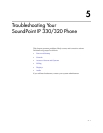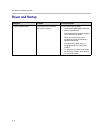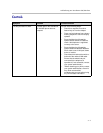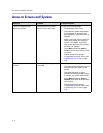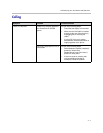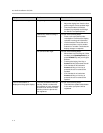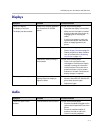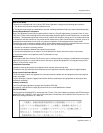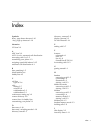
User Guide SoundPoint IP 330/320
Index – 2
L
language support 2–5
M
managing buddies 4–5
microphone mute 3–8
Microsoft Office Live Communications
Server 2005 4–4, 4–7
multiple call appearances 4–3
multiple calls, hold 3–9
multiple keys per line 2–16
multiple lines
call forwarding 3–13
Do Not Disturb 3–14
ring type 2–4
support for 2–16
Voice Mail 3–17
MyStat 4–5
N
navigation guide icon 1–11
navigation key usage 1–10
network connection, phone 1–4
P
parts list 1–2
placing calls 3–2
PoE. See Power over Ethernet
Power over Ethernet (PoE) 1–4
power source, phone 1–4
presence 4–5
privacy list 4–7
R
redialing numbers 3–8
restarting phones 4–8
ring types 2–4
RJ-9 1–5
S
shared lines 2–16
silent ring, answering calls 3–5
SoundPoint IP 320. See SoundPoint IP 330
SoundPoint IP 330
adjusting display constrast 2–3
adjusting volume 3–8
advanced features 4–1
answering calls 3–4, 3–5
assembling 1–3
assigning speed dial indexes 3–15
attaching base 1–5
automatic call distribution 4–1
basic features 3–1
buddy lists 4–5
call lists, types of 2–6
calls, on hold 3–8
contact directory 2–8
customizing 2–1
data entry 1–10
Do Not Disturb 3–14
ending calls 3–7
features, list of 1–8
figure, features 1–8
forwarding calls 3–12
getting started 1–1
handset 1–4
headset 1–4
headset memory mode 2–3
idle display 2–2
illustration 1–2
language support 2–5
multiple call appearances 4–3
multiple keys per line 2–16
muting microphone 3–8
navigation key usage 1–10
parts list 1–2
placing calls
3–2
presence 4–5
redialing numbers 3–8
restarting phone 4–8
ring type 2–4
setting time and date 2–2
setting up conferences 3–9
shared lines 2–16
transferring calls 3–11
troubleshooting 5–1
useful tips 1–10
using multiple lines 2–16
voice mail 3–17
SoundPoint IP 330/320
difference between phones 1–4
speakerphone. See hands-free mode
speed dialing 3–15
switching entry modes 1–10



